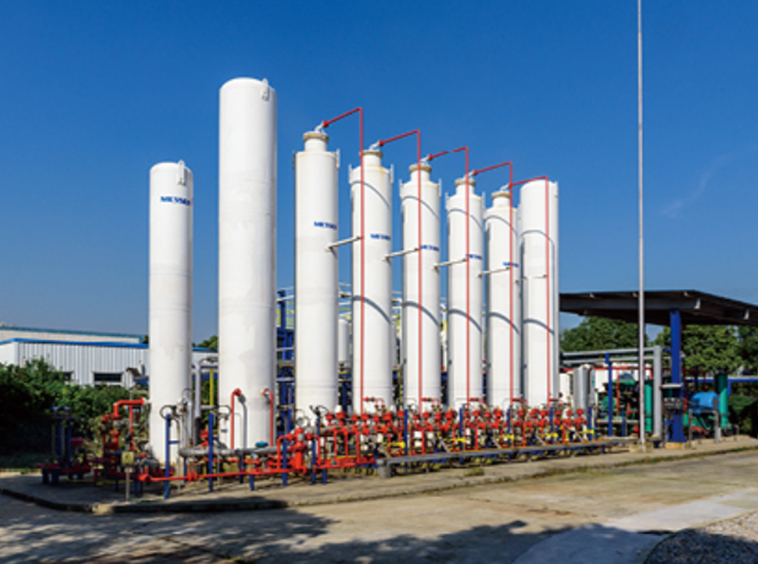Name: Jiangsu Jianye Chemical Equipment Co., Ltd.
Contact: Liu Yong
Phone:0512-58370568
Mobile:13806225925
Fax:0512-58371568
Mailbox:ly925@jylng.cn
Address: Sanjiali Road, Nansha, Jingang Town, Zhangjiagang City
Website:en.jylng.cn
LNG (Liquefied Natural Gas), the abbreviation of LNG. Natural gas is a flammable gas that is naturally excavated in the gas field. The primary component is methane. LNG is cooled to -162 ° C by natural gas in a gaseous state at atmospheric pressure to cause it to condense into a liquid. After natural gas liquefaction, it can greatly save storage and transportation space and cost, and has high calorific value and high performance characteristics.
LNG is a clean, efficient power. Since the import of LNG helps the power-consuming countries to diversify their power supply and ensure power safety, the export of LNG will help the natural gas producing countries to develop natural gas capital, add foreign exchange income, and promote the national economy. Therefore, LNG trading is becoming a global driving force. The new sought-after shopping mall.
Natural gas is increasingly favored as a cleaning power. Many countries have listed LNG as the fuel of choice, and the share of natural gas in the power supply has been added agilely. Liquefied natural gas is increasing at a rate of about 12% per year, making it one of the fastest growing power industries in the world. In the past few years, the production and trading of global LNG has become more and more active. LNG has become a scarce cleaning capital and is becoming a new hotspot for the world oil and gas industry. In order to ensure the diversification of power supply and improve the construction of power consumption, some power-consuming countries are paying more and more attention to the introduction of LNG. Japan, South Korea, the United States, and Europe are all planning to build LNG receiving stations. The world's major oil companies have also turned their new profit increase points into LNG affairs, and LNG will become the next wave of global power grabs.

The use of natural gas in China is extremely unbalanced, and the proportion of natural gas in China's power is small. Judging from the situation of natural gas development in China, natural gas capital is limited, natural gas production value is far less than demand, and the gap between supply and demand is growing. Although it has not yet formed a plan, the characteristics of LNG determine that LNG is very agile. It can be foreseen that in the next 10-20 years, LNG will become the main force of China's natural gas market. In 2007, China imported 2.91 million tons of LNG. In 2007, the import volume was more than three times that of 2006. From January to December 2008, China's total imports of LNG were 3,336,405 tons. From January to December 2009, China’s total import of LNG was 5,531,795 tons.
While China's economy continues to develop rapidly, the driving force for ensuring the economy is extremely scarce. China's power structure is dominated by coal, and oil and natural gas only account for a small share, far below the world average. Following the increasing demand for power in the country, the introduction of LNG will play an important role in optimizing the dynamic structure of China, the two layers of doubts about the power supply safety and ecological environment protection, and the completion of economic and social performance.
China's LNG industry is paying more and more attention. The coastal LNG projects that China is planning and implementing include: Guangdong, Fujian, Zhejiang, Shanghai, Jiangsu, Shandong, Liaoning, etc. These projects will eventually form a coastal LNG receiving station and transportation pipe. network.
According to China's LNG utilization plan, domestic production capacity will reach 240 billion cubic meters in 2020. In terms of importing natural gas, the National Development and Reform Commission estimates that by 2020, China will import 35 billion cubic meters, equivalent to 25 million tons per year, which is seven times the total number of receiving stations in Guangdong Province.
It is well known that a low-temperature adiabatic storage and transportation container (also called a cryogenic storage tank) stores and transports gas by retaining a low-temperature liquefied gas. This method has a low storage and transportation pressure compared with a method using a high-pressure liquefied gas and a high-pressure condensing gas. Features of high safety and large storage and transportation. In recent years, with the rapid development of domestic gas shopping malls, the state has also put forward higher requirements for the safety skills of low-temperature adiabatic pressure vessels. In the 2009 edition of the “Regulations for the Safety of Fixed Pressure Vessels”, the volume will be more than 5m3. The cryogenic storage container is classified under the safety supervision of the third type of pressure vessel. CF and ZCF type cryogenic liquid storage tanks are double-wall vacuum powder insulation for liquid oxygen, liquid nitrogen, liquid argon and other low temperature liquid storage. It replaces the traditional gas high pressure storage method, and has many advantages such as high utilization rate, safety and reliability, medium non-contamination, and convenient operation.